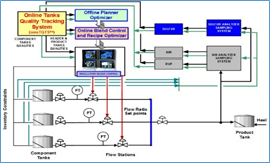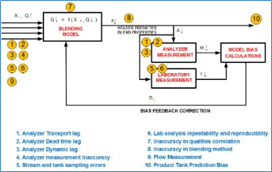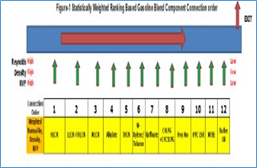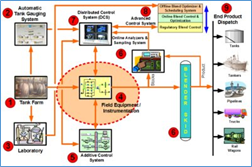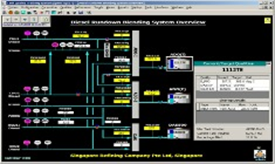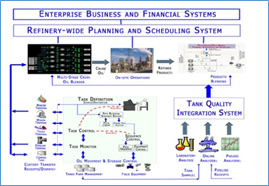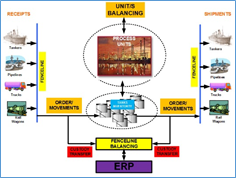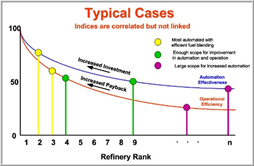RL Blogs

By Dr. Suresh S Agrawal
Aug 16, 2015Complimentary webinar offerings to support refinery organization capability development. |
||||||||||||||||||
| It is important for experienced professionals and new graduates alike to upgrade and seek new skills related to their job requirements.
For this purpose they resort to in-house or offsite training courses, workshops, conferences and webinars etc. Normally the organizations fund their employees to attend these continuing educations programs, but the funds for such training are very limited nowadays because of low oil prices.
OMS has been conducting complimentary webinars for professionals in the refinery offsite operations to share our expertise and experience with them. These webinars are conducted once a month and their recordings are made available online to view after the scheduled events.
UPCOMING WEBINARS
Refining industry uses linear/non-linear programming principles and technology to implement many control and optimization systems. They could be for a distillation tower, crude blending, fuels blending, planning and scheduling, product distribution, etc. just to name applications.
This free webinar would discuss and illustrate the mathematics behind few LP/NLP applications and demonstrate their implementation using commercial software.
PAST RECORDED WEBINARS
Here is a list of webinars conducted and recorded for viewing by professionals working in the refinery offsite operations area. Please click here to view any of these past webinars and/or register for the upcoming webinar in August, 2015.
models, qualities, analyzers, laboratory and predictions to name a few. This webinar discusses all these errors with respect to their origins, how to estimate them and minimize if possible. Optimization and reconciliation of blend models parameters is also discussed briefly.
requires lots of design consideration from component connection order, connection points, flow regime, pressure drop, booster pump requirement etc. This webinar gives an overview of all design consideration for blend header and takes myth out of “Blend header is just a piece of pipe”.
have reduced the global use, resulting in an oversupply of reserves. As a result, the volumes of crude oil being refined have decreased. For countries with government controlled fuel and crude oil prices, the diminished refining volumes become a critical issue.
The information imparted during this webinar affirms the existing knowledge of registrants and increase learning and comprehension of fuel blending systems, thereby contributing toward efficient and economic management.
is expensive, manpower intensive, time consuming and furthermore it delays the manufacturing processes due to lengthy analysis procedures.
The information imparted during this webinar will discuss a model based online tanks quality tracking system, how its implementation can save millions of dollars in the lab operational cost. It will also discuss the benefits of 2M$+/year realized by a refinery in Singapore by its implementation for run-down open loop diesel, Jet Fuels and Kerosene Fuels blending systems.
focus on safe, efficient and optimized production of inter-units feed stocks. Offsite operations on other hand cater towards producing end-products. These end products are blended products such as gasoline, fuel oil and diesel, kerosene, jet fuels, LPG, etc. and makes heavy use of tank farm management, oil movements, custody transfer across fence-line, hydrocarbon management, etc.
It is no surprise that offsite operations account for 80-90% of refinery’s end products and hence affect the refinery bottom line in terms of efficiency, accuracy, accountability and minimization of quality giveaways. The webinar reviews all offsite operations activities and their management and automation problems and challenges.
0.35-0.55% of refinery crude throughput and this translates into yearly loss of 35-60M$ for a 300KBD refinery with crude price of $100/bl. This loss does not even account for loss due to demurrage, data inconsistencies in custody transfer data, etc. This is huge incentive for not so efficient refineries, at least it should be, to manage its assets efficiently, streamline the accounting procedures, calibrate its meters, etc.
This webinar discusses the concept of HM landscape in a refinery, process of reconciliation, asset management systems (Tanks, oil movement, custody transfer, vendor/customer management (ERP), etc.) and relates them with element of the accounting process
which vary in both qualities and monetary value. These fuels products have very strict specifications to meet and refinery use automated fuels blending control system to optimize and control their properties.
This free webinar discusses a methodology to benchmark the state of fuels blending system in a refinery to compare with other refineries by using two indices, Automation Effectiveness and Operational Efficiency. These two indices also gauges budgetary investment required either to convert manual to automated system or upgrade automated system to state-of-the-art blending control system.
countries. He has published and presented 30+ papers in international publications and conferences in the areas of refinery offsite operations automation. He has also acted as a consultant to a number of refining and process industries worldwide, and delivers training seminars in the areas of his expertise. | ||||||||||||||||||
|
|

